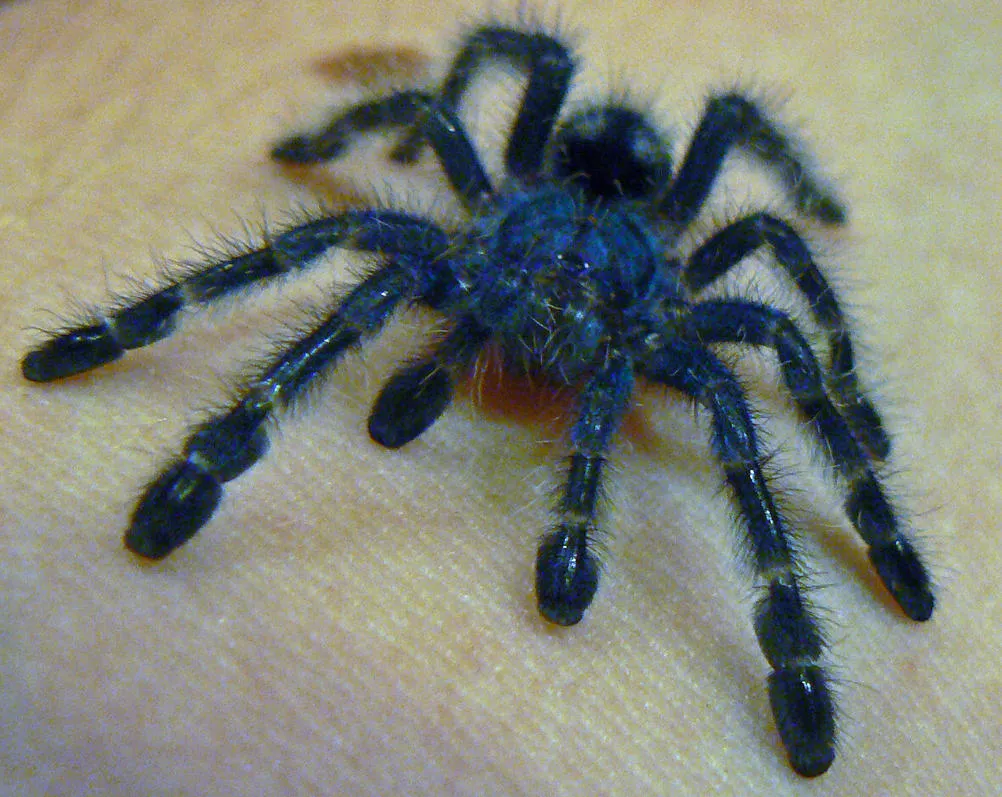What is Considered a Baby Tarantula
Understanding the size of a baby tarantula is crucial for providing proper care. A baby tarantula, often referred to as a spiderling, is a tarantula in its earliest stages of life, right after it hatches from its egg sac. This initial size can vary, but generally, a baby tarantula can range from a fraction of an inch to about half an inch in leg span, depending on the species. These tiny creatures are incredibly delicate and require very specific environmental conditions. Their small size means they are more vulnerable to dehydration, predation, and fluctuations in temperature and humidity. Proper care at this stage sets the foundation for a healthy and thriving tarantula, which means understanding their size, behavior, and needs. This also means understanding what type of enclosure they need to thrive and making sure that you can properly accommodate their growth as they develop.
Size at Hatching
The size of a tarantula at hatching is one of the first things new owners learn. When baby tarantulas emerge from their egg sac, their size is incredibly small. The exact dimensions depend on the species, but generally, they are measured by their leg span. Some of the smallest species might hatch with a leg span of only 1/8 to 1/4 inch, while larger species can start at around 1/2 inch or slightly more. At this stage, they are very fragile and appear almost translucent. They also have limited mobility and a huge appetite, which needs to be monitored by the owner. Providing appropriately sized food and a safe, stable environment are critical to their survival. Hatchling tarantulas also require specific temperature and humidity levels to thrive, and any deviation from these can lead to health problems. It’s also important to remember that at this phase, they haven’t developed their full coloration. Owners must understand this stage to provide the necessary care and ensure the tarantulas’ healthy development.
Factors Influencing Initial Size
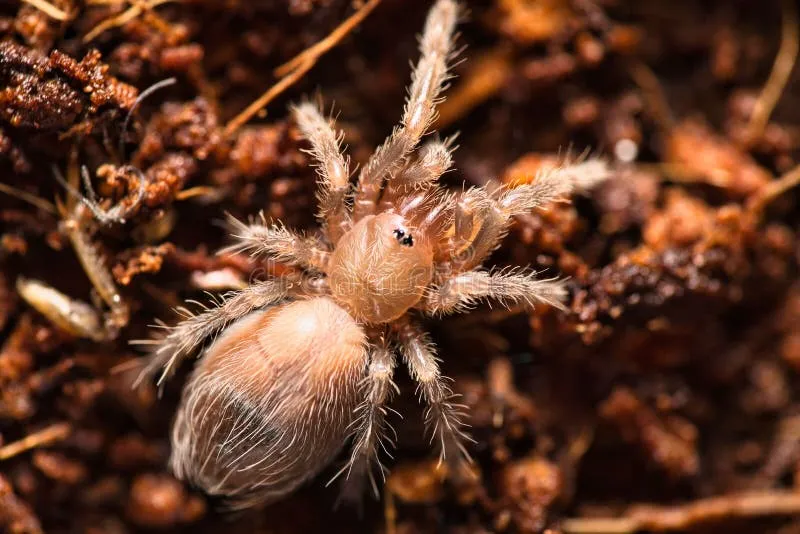
Several factors contribute to the initial size of a baby tarantula. The most significant factor is the species. Some species are naturally larger and have bigger spiderlings at birth. Genetics also play a role; the size of the mother, the health of the eggs, and the overall genetic makeup of the tarantula can affect the size of the offspring. Environmental conditions during the egg development phase also impact size. Proper temperature and humidity levels inside the egg sac are crucial for healthy development, as deviations can lead to smaller or less robust spiderlings. Nutrition is a factor as well. The mother’s diet and health during egg production influence the yolk reserves available to the developing spiderlings. The mother must be in good health to produce bigger, healthier spiderlings. Finally, the number of spiderlings in an egg sac may impact size. Larger broods may result in slightly smaller spiderlings due to resource distribution.
Species Differences
Species differences are key in determining the size of baby tarantulas. The diversity among tarantula species results in significant size variations at birth. For instance, the Goliath Birdeater (Theraphosa blondi), one of the largest tarantula species, will have spiderlings that are considerably bigger at hatching compared to smaller species like the Antilles Pinktoe (Caribena versicolor). The growth rate and final adult size also vary significantly between species, impacting how rapidly the spiderlings develop. Some species exhibit faster growth rates, reaching adulthood in a few years, while others take much longer. When you’re deciding on a tarantula as a pet, research the specific species to understand its size at hatching and its potential growth trajectory. This will help you prepare the right size enclosure and meet the species’ specific care requirements. Understanding these differences ensures that you can provide the best environment to support healthy growth and development.
Growth Rate
The growth rate of a baby tarantula is influenced by several factors, including species, feeding frequency, temperature, and humidity. Young tarantulas typically grow rapidly, particularly during their first year. The frequency of molting, where they shed their exoskeleton to grow larger, is a key indicator of growth. Spiderlings molt frequently, sometimes every few weeks. As they mature, the time between molts increases, eventually slowing down as they reach adulthood. Feeding plays a vital role in growth. A diet of appropriately sized live insects, such as pinhead crickets or fruit flies, supports their development. Consistent access to food is essential, and the amount of food given needs to be adjusted as they grow. Environmental conditions also play a significant role. Maintaining optimal temperature and humidity levels accelerates growth. Proper care, including appropriate feeding and environmental control, can significantly impact the growth rate and overall health of a baby tarantula. A slower growth rate can also indicate the tarantula might not be getting the right nutrition or might be in an unhealthy environment.
Molting and Its Impact
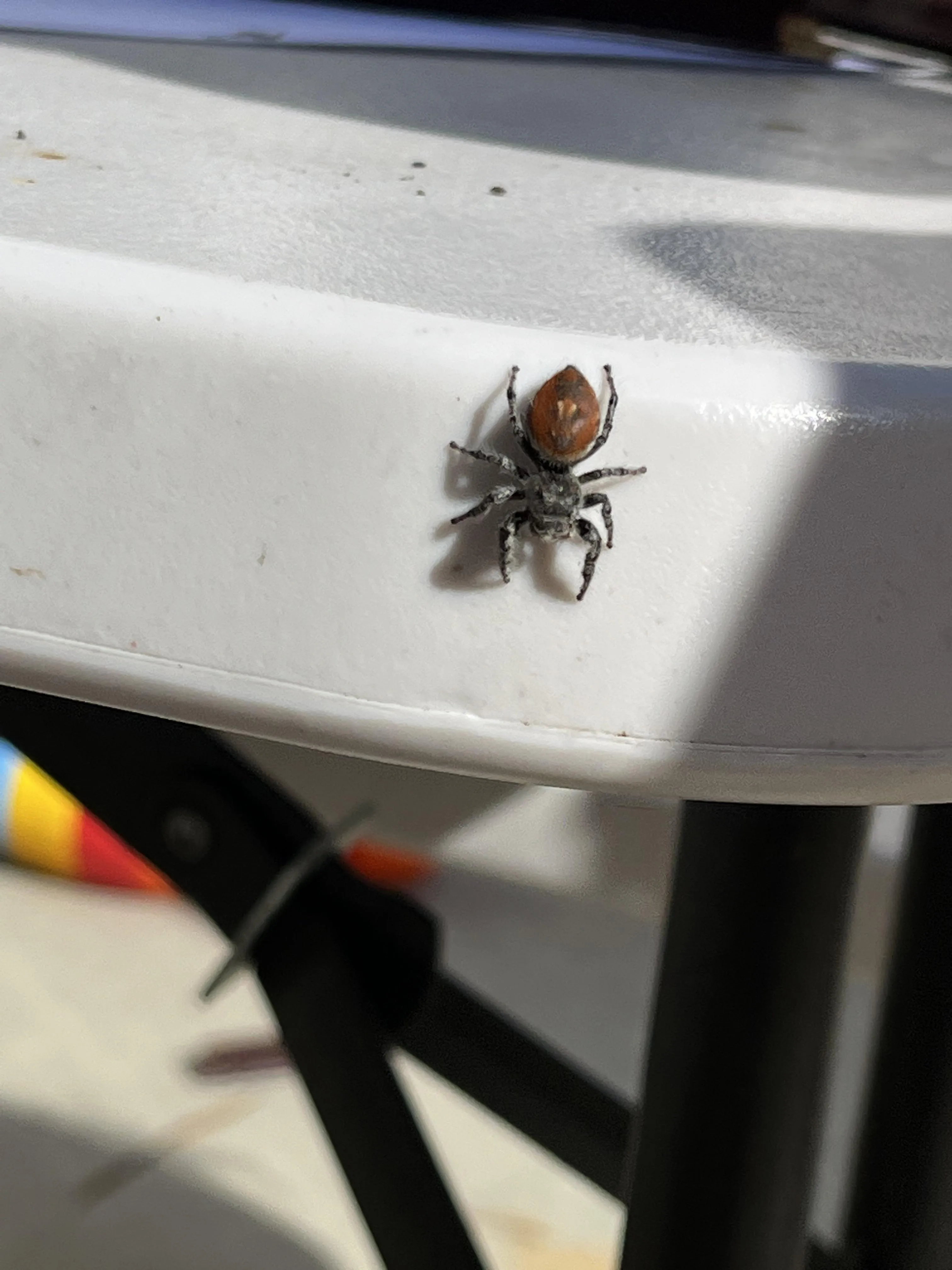
Molting is a fundamental process in the life of a baby tarantula, directly influencing its growth and overall health. As a spiderling grows, its exoskeleton becomes too small, prompting it to molt and shed the old one to reveal a larger, new one. The frequency of molting is highest during the early stages of life and gradually decreases as the tarantula matures. Each molt allows the tarantula to increase in size, but it is also a vulnerable time. During this process, the tarantula is soft and defenseless, making it essential to maintain a secure and undisturbed environment. Molting is also a time for the tarantula to regenerate lost limbs or body parts, and the new exoskeleton will be brighter in coloration and appearance. Environmental factors, such as humidity, play a crucial role in the molting process. Low humidity can make molting difficult, sometimes leading to a failed molt, which can be fatal. Understanding the molting cycle and providing the right environment are critical for the survival and healthy development of a baby tarantula.
Feeding and Nutrition
Feeding and nutrition are essential for the growth and health of baby tarantulas. Spiderlings have specific dietary needs that must be met to ensure they thrive. They typically feed on small, live insects such as fruit flies, pinhead crickets, or flightless fruit flies. The size of the prey should be appropriate, generally no larger than the tarantula’s body size. Overfeeding can be just as detrimental as underfeeding, so it’s important to monitor how much the tarantula eats and adjust the feeding schedule accordingly. The frequency of feeding also depends on the species and the tarantula’s growth stage, as younger ones tend to eat more often than older ones. The diet must be supplemented with essential nutrients to support growth. Providing the baby tarantulas with a balanced diet will ensure the spiderlings develop well, grow quickly, and have a long and healthy life. Remember to remove any uneaten prey to prevent stress.
Proper Diet for Growth
A proper diet is vital for the healthy growth of baby tarantulas. The diet should consist of live insects of the appropriate size, ensuring the spiderling can catch and consume them easily. Good options include pinhead crickets, flightless fruit flies, or small mealworms. Variety in the diet is beneficial, so offering different types of insects periodically can provide a broader range of nutrients. The frequency of feeding should be adjusted based on the tarantula’s age and species, with younger spiderlings generally requiring more frequent meals. You also must monitor the tarantula’s condition, as a well-fed tarantula will have a round abdomen, while an underfed one will have a smaller abdomen. Supplementing the insects’ diet with nutritional supplements, like gut-loading the feeder insects with vitamins and minerals before feeding them to the tarantula, is a good way to provide a balanced diet. Always provide a source of fresh, clean water to prevent dehydration, and remove any uneaten food promptly to prevent mold or mites.
Environmental Conditions
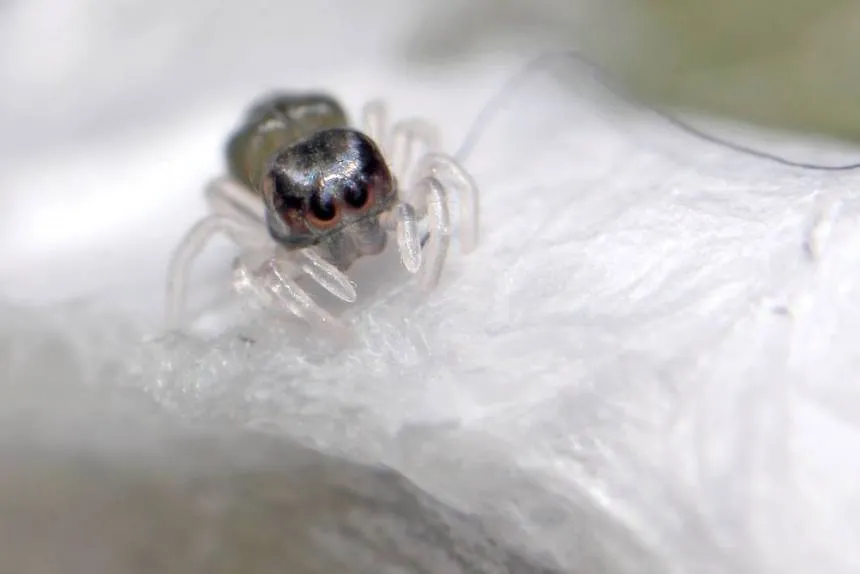
Environmental conditions play a significant role in the health and growth of baby tarantulas. These arachnids are highly sensitive to their surroundings, so maintaining the right temperature and humidity is essential. Most species thrive in temperatures between 75°F and 85°F (24°C to 29°C). You can use a heat mat or a small heat lamp to maintain the temperature, but you must avoid direct heat sources that can harm the tarantula. Humidity levels are equally critical. The ideal humidity range varies by species, but generally, baby tarantulas need a slightly higher humidity level than adults. This can be maintained by misting the enclosure periodically or by providing a shallow water dish. Proper ventilation is also necessary to prevent the buildup of mold and mildew. The enclosure should also be kept clean, removing uneaten food and waste regularly to avoid disease. Maintaining the right environmental conditions supports the spiderling’s development and overall health.
Temperature and Humidity
Temperature and humidity are two of the most crucial environmental factors for baby tarantulas. Maintaining the correct temperature is essential for the tarantula’s metabolism and growth. Too cold an environment can slow down the tarantula’s activities, while too hot can be dangerous. Using a thermometer to monitor the enclosure’s temperature is crucial. Humidity levels also significantly impact the spiderling’s health. Humidity influences the molting process, and the tarantula will struggle to molt if humidity is too low. High humidity can lead to mold and mildew growth, so you must strike a balance. Regularly misting the enclosure with dechlorinated water or providing a water dish can help maintain humidity levels. A hygrometer is a good tool to monitor humidity accurately. The ideal temperature and humidity levels vary based on the species of tarantula, so research the specific requirements of your spiderling. Monitoring and adjusting these two factors ensures that your tarantula stays healthy and thrives.
Lifespan and Size Potential
Understanding the lifespan and size potential of a baby tarantula is essential for proper care and planning. The lifespan of tarantulas varies widely among species, and it is often influenced by sex and environmental conditions. Female tarantulas typically live much longer than males, sometimes living for several decades, while males may live only a few years after reaching maturity. The size a tarantula reaches is also species-dependent. The Goliath Birdeater, for instance, can have a leg span of over 10 inches, while smaller species may only reach 3-4 inches. The size and growth rate depend on the species, diet, environment, and overall health of the tarantula. Knowing these factors enables owners to provide appropriate housing, care, and a realistic understanding of their pet’s life cycle. They will also know how to accommodate the tarantula as it ages and grows.
Reaching Full Size
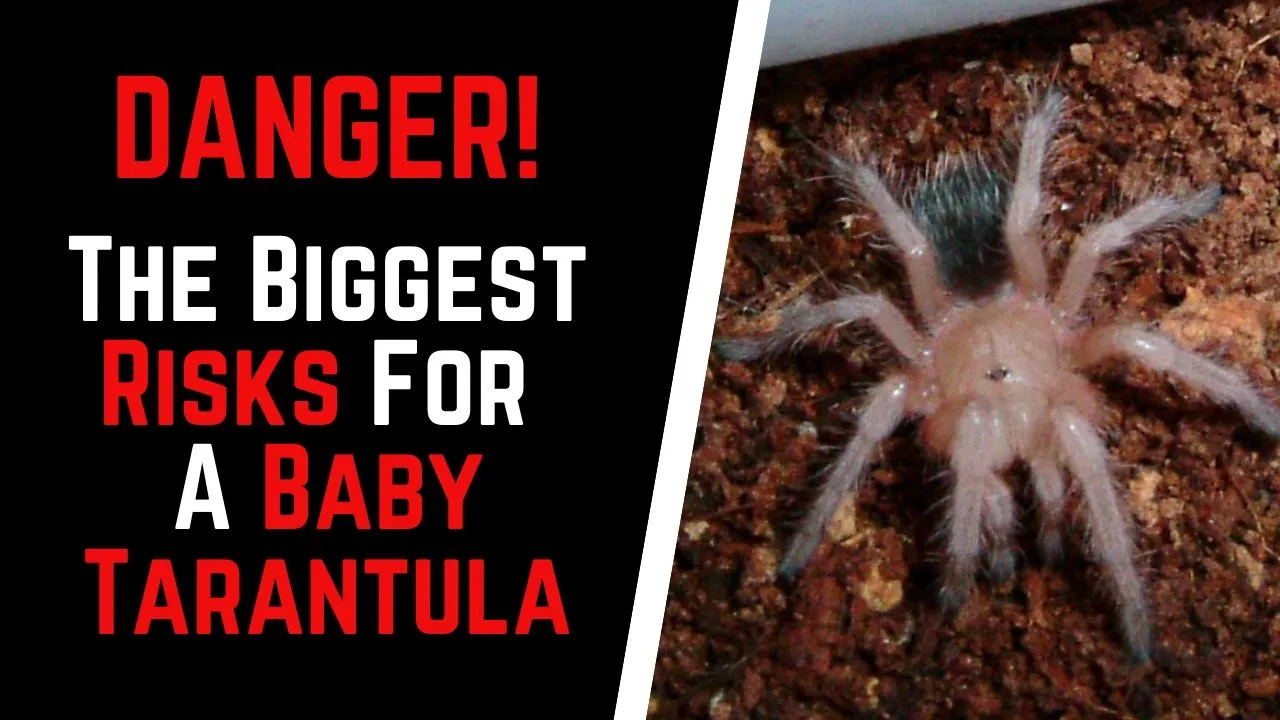
Reaching full size is a significant milestone in a baby tarantula’s life, and the process varies from species to species. The growth process happens through molting, and the frequency of molting decreases as the tarantula matures. Factors such as feeding habits, environment, and genetics influence the overall growth process. Once the tarantula reaches its adult stage, it will molt less frequently, and the molts will usually be smaller. The time it takes for a tarantula to reach its full size varies. Some smaller species might mature within a year or two, while larger species can take several years. Providing an appropriate diet, maintaining the right environmental conditions, and avoiding stress helps the tarantula reach its full size. When a tarantula is approaching its adult size, you must monitor the growth and adjust the enclosure and care as needed. Knowing the potential size of the species helps in preparing for the appropriate enclosure size and care.
Size Comparison with Adults
Comparing the size of a baby tarantula to an adult tarantula highlights the dramatic changes that occur throughout its life cycle. The initial size of a spiderling, often just a fraction of an inch, contrasts sharply with the full-grown adult. The size difference can vary greatly depending on the species. A full-grown Goliath Birdeater can be massive, with a leg span exceeding 10 inches, while the spiderling is tiny. This comparison underscores the significant growth that takes place over several years. As the spiderling grows, it molts frequently, gradually increasing in size until it reaches adulthood. Understanding the adult size of the species is essential when setting up an enclosure and providing care, since the housing must be appropriately sized to accommodate the adult tarantula. The rate of growth and final size can also give you an idea of the care your baby tarantula will require.
Caring for Baby Tarantulas
Caring for baby tarantulas involves a set of specific practices to ensure their health and well-being. Baby tarantulas need a secure and appropriately sized enclosure. It should have enough ventilation and a substrate that retains humidity, like coconut fiber or vermiculite. The temperature and humidity levels must be maintained as per the species’ needs, and you should monitor these levels regularly. The enclosure should also include a water dish with fresh, clean water and a hide or shelter, like a piece of cork bark. Feeding is an important part of the care, and you should provide appropriately sized live insects, like fruit flies or pinhead crickets. You should remove any uneaten food within a few hours to prevent mold and mites. Handling baby tarantulas should be kept to a minimum due to their vulnerability and fragility. Providing a stimulating environment is essential for the baby tarantulas’ health and well-being.
Housing Requirements
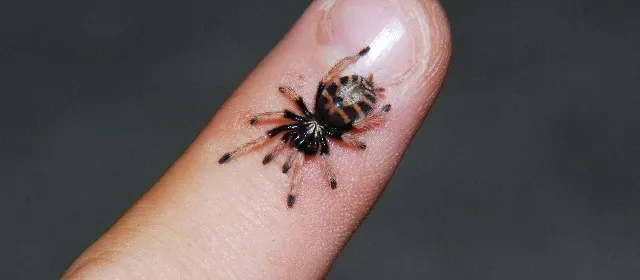
Housing requirements for baby tarantulas are crucial to their health and survival. The enclosure should be appropriately sized for the spiderling’s current size and allow for growth. A secure enclosure is essential to prevent escape and protect the tarantula. The type of enclosure often depends on the species and its natural habitat. Ventilation is also very important to prevent the buildup of harmful gases and maintain proper air circulation. The substrate you use must hold moisture and provide a burrowing opportunity if the species requires it. Options include coconut fiber, vermiculite, or a mix of peat moss and soil. Temperature and humidity levels must be maintained as needed for the species. A shallow water dish should also be provided, ensuring the spiderling has access to fresh water. The enclosure should also include a hide, such as a piece of cork bark or a small cave, providing a secure place for the tarantula to retreat. Proper enclosure setup creates a safe, comfortable environment and supports the tarantula’s well-being.
Handling and Safety
Handling and safety are key considerations when dealing with baby tarantulas. Handling baby tarantulas should be kept to a minimum, as they are small, fragile, and easily stressed. Their small size also makes them more prone to injury. If handling is necessary, it should be done carefully and gently, avoiding sudden movements. Always handle a baby tarantula close to a soft surface to prevent injury if it falls. Tarantula bites can be painful and cause some discomfort, and although the venom is usually not dangerous to humans, a bite can occur if you are not careful. Always wash your hands before and after handling the tarantula to prevent the spread of bacteria. Ensure you have a good understanding of your tarantula’s species and its temperament before handling it. If you are not comfortable handling the tarantula, it is best to avoid it altogether. When you’re not interacting with it, keep it in a secure enclosure and provide a safe environment to support its overall health and wellness.
